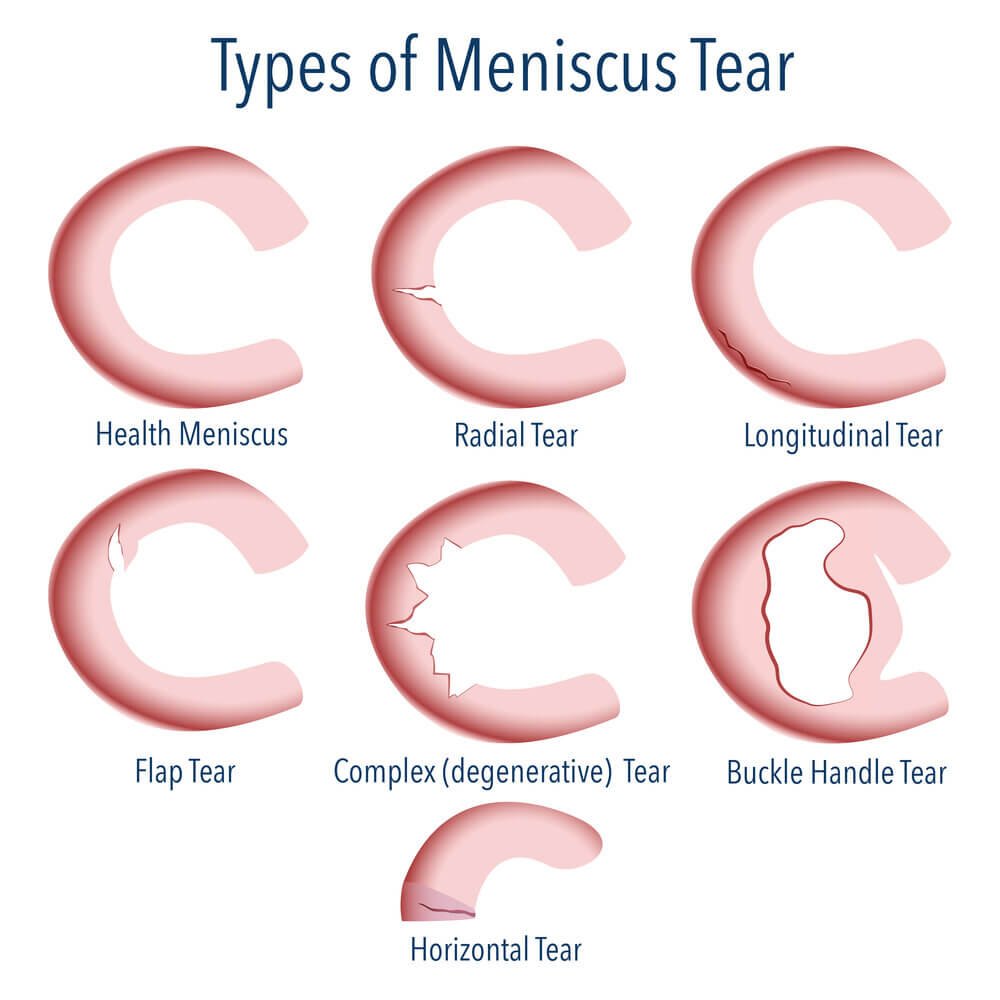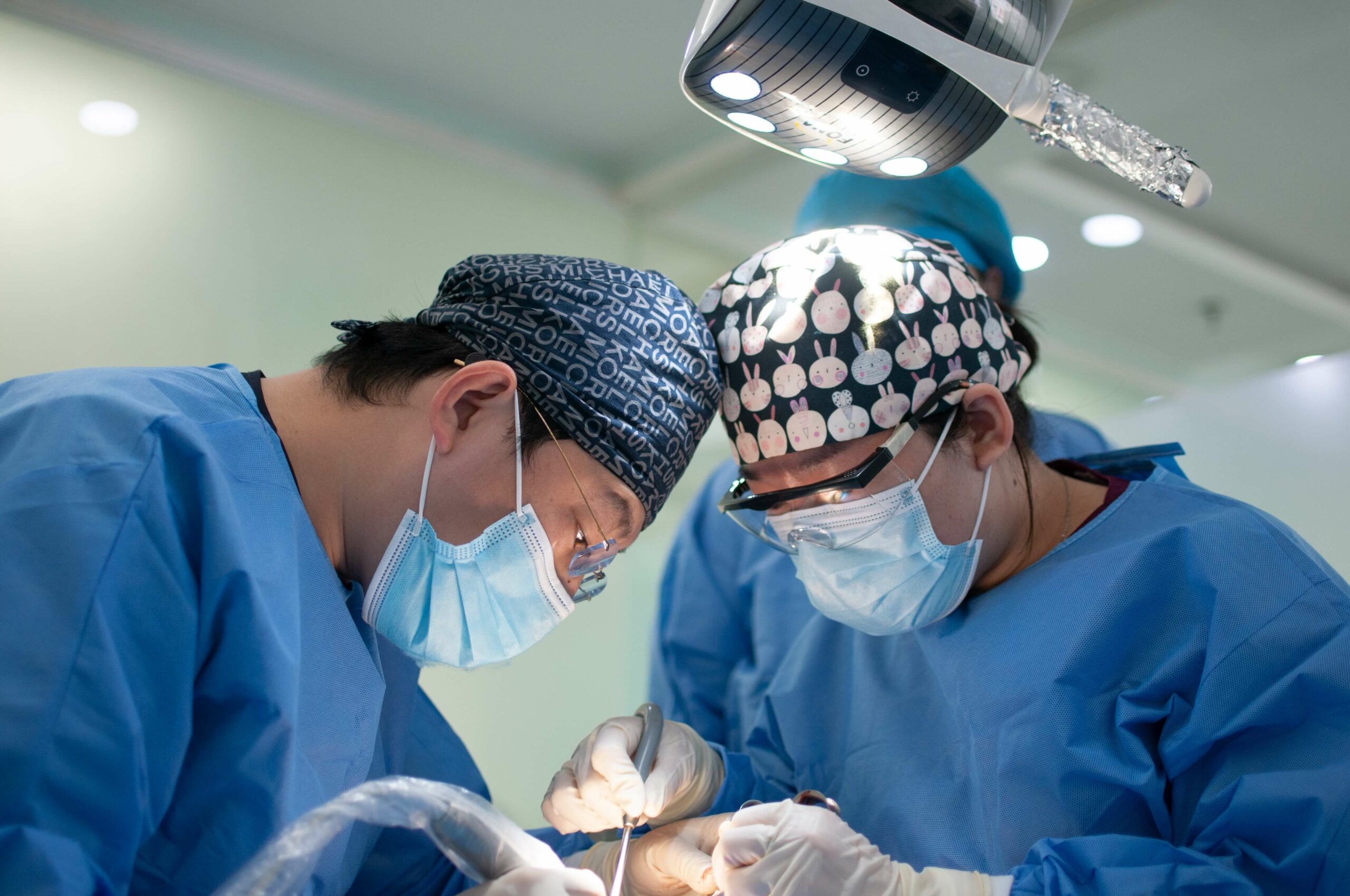Understanding Meniscus Tears

A meniscus tear is a common knee injury that occurs when the meniscus, a C-shaped piece of cartilage that acts as a shock absorber in the knee joint, is torn. This injury can happen due to a sudden twisting or forceful impact on the knee. Understanding the anatomy of the meniscus and the types of tears can help you grasp the severity of the injury and its potential impact on your recovery.
Anatomy of the Meniscus, Meniscus tear recovery
The meniscus is a wedge-shaped piece of cartilage that sits between the femur (thigh bone) and the tibia (shin bone) in the knee joint. It serves several vital functions, including:
- Shock absorption: The meniscus helps to cushion the impact of weight-bearing activities, reducing stress on the knee joint.
- Joint stability: The meniscus helps to stabilize the knee joint, preventing excessive movement and reducing the risk of dislocation.
- Lubrication: The meniscus helps to distribute synovial fluid, a lubricating fluid that helps to reduce friction in the knee joint.
Types of Meniscus Tears
There are different types of meniscus tears, classified based on their location, shape, and severity:
- Horizontal tear: A horizontal tear occurs across the width of the meniscus, often resulting from a twisting injury.
- Vertical tear: A vertical tear runs from the top to the bottom of the meniscus, often resulting from a direct impact or forceful twisting.
- Bucket-handle tear: A bucket-handle tear is a large, vertical tear that can detach a significant portion of the meniscus, causing it to flap within the joint.
- Radial tear: A radial tear is a tear that runs from the outer edge of the meniscus toward the center.
Activities that Can Lead to a Meniscus Tear
Several activities can lead to a meniscus tear, including:
- Sports activities: Activities involving twisting, pivoting, and sudden changes in direction, such as football, basketball, and skiing, can put the meniscus at risk.
- Falls: A fall that causes a direct impact on the knee can lead to a meniscus tear.
- Repetitive stress: Activities that involve repetitive knee bending and straightening, such as running and jumping, can also contribute to meniscus tears.
Symptoms and Diagnosis

A meniscus tear can cause a range of symptoms, and the severity of these symptoms often depends on the size and location of the tear. Understanding these symptoms and seeking prompt medical attention is crucial for proper diagnosis and treatment.
Common Symptoms
A meniscus tear can manifest in several ways, including:
- Pain: This is the most common symptom, often felt as a sharp pain at the time of injury. The pain may be localized to the knee joint or radiate down the leg.
- Swelling: The knee may swell rapidly after the injury or gradually over time. Swelling can be a sign of fluid buildup in the joint.
- Locking: The knee may suddenly lock or catch, making it difficult to bend or straighten. This occurs when a piece of the torn meniscus gets caught between the bones.
- Clicking or Popping: A clicking or popping sensation may be felt when moving the knee. This is caused by the torn meniscus moving within the joint.
- Stiffness: The knee may feel stiff, especially after periods of inactivity.
- Instability: The knee may feel unstable or give way, especially when putting weight on it.
Diagnostic Methods
Diagnosing a meniscus tear involves a combination of physical examination and imaging tests:
- Physical Examination: A doctor will assess your knee for pain, swelling, tenderness, range of motion, and stability. They may perform specific tests to check for meniscus tears, such as the McMurray test or the Apley compression test.
- MRI (Magnetic Resonance Imaging): An MRI is a powerful imaging test that provides detailed images of the knee joint. It can reveal the location, size, and severity of the meniscus tear, as well as any other associated injuries.
Importance of Timely Diagnosis
A timely diagnosis is crucial for several reasons:
- Appropriate Treatment: A correct diagnosis helps determine the best treatment option for your specific situation.
- Preventing Further Damage: Delaying treatment can lead to further damage to the meniscus or other knee structures, potentially complicating recovery.
- Improving Long-Term Outcomes: Early intervention can improve long-term outcomes, reducing the risk of chronic pain, instability, and osteoarthritis.
Treatment Options: Meniscus Tear Recovery

Meniscus tear recovery – Treatment for a meniscus tear depends on several factors, including the location and severity of the tear, your age, activity level, and overall health. There are two main treatment approaches: non-surgical and surgical.
Non-Surgical Treatment
Non-surgical treatment is often the first line of defense for meniscus tears, especially for mild to moderate tears. The goal is to reduce pain and inflammation, allowing the meniscus to heal naturally.
| Treatment Option | Description | Benefits | Potential Risks |
|---|---|---|---|
| RICE (Rest, Ice, Compression, Elevation) | This involves resting the injured knee, applying ice to reduce swelling, using a compression bandage to support the knee, and keeping the knee elevated. | Reduces pain and inflammation. | May not be effective for all meniscus tears. |
| Over-the-counter pain relievers | Nonsteroidal anti-inflammatory drugs (NSAIDs) like ibuprofen or naproxen can help manage pain and inflammation. | Reduces pain and inflammation. | Can cause stomach irritation and other side effects. |
| Physical therapy | A physical therapist can teach you exercises to strengthen the muscles around your knee, improve flexibility, and restore range of motion. | Improves strength, flexibility, and stability. | May take time to see results. |
| Corticosteroid injections | Corticosteroids are injected into the knee joint to reduce inflammation. | Provides temporary pain relief. | Can weaken the surrounding tissues and may not be a long-term solution. |
Surgical Treatment
Surgery is usually recommended for meniscus tears that cause significant pain, instability, or locking of the knee. There are two main types of meniscus surgery: arthroscopic surgery and open surgery.
Arthroscopic Surgery
Arthroscopic surgery is a minimally invasive procedure that uses a small camera and surgical instruments inserted through small incisions. This allows the surgeon to visualize the tear and repair or remove the damaged portion of the meniscus.
Types of Arthroscopic Meniscus Repair
There are two main types of arthroscopic meniscus repair:
- Meniscus repair: The torn meniscus is stitched back together. This is usually done for tears that are located in the outer part of the meniscus, which has a better blood supply.
- Meniscus partial resection: The torn portion of the meniscus is removed. This is often done for tears that are located in the inner part of the meniscus, which has a poor blood supply and is less likely to heal.
Open Surgery
Open surgery is less common and is usually reserved for complex meniscus tears that cannot be repaired arthroscopically. This involves a larger incision to access the knee joint and repair or remove the damaged portion of the meniscus.
Decision-Making Process
The decision of whether to pursue non-surgical or surgical treatment for a meniscus tear is a collaborative one between you and your doctor. Here is a flowchart outlining the decision-making process:
[Flowchart image here. Please describe the flowchart.]
Table Comparing Non-Surgical and Surgical Treatment Options
Here is a table comparing and contrasting non-surgical and surgical treatment options for meniscus tears:
| Treatment Option | Description | Benefits | Potential Risks |
|---|---|---|---|
| Non-surgical | RICE, over-the-counter pain relievers, physical therapy, corticosteroid injections | Less invasive, quicker recovery time, lower risk of complications | May not be effective for all meniscus tears, may require longer rehabilitation, may not provide long-term pain relief |
| Surgical | Arthroscopic surgery or open surgery | Can repair or remove the torn meniscus, can improve pain and function | Higher risk of complications, longer recovery time, may require more extensive rehabilitation |
Meniscus tear recovery can be a long and arduous journey, filled with frustration and uncertainty. It’s a testament to the resilience of the human body, though, and a reminder that even with setbacks, the path to recovery can be paved with determination.
Just like jahmyr gibbs has shown on the field, pushing through adversity to achieve greatness, so too can we find strength and determination to overcome our own physical challenges. With time, patience, and dedication, a full recovery is possible, allowing us to get back to the things we love, whether it’s playing a sport or simply enjoying an active lifestyle.
Recovering from a meniscus tear is a tough journey, filled with physical limitations and a yearning to get back to your active life. It’s like watching your favorite team, the Vikings, struggle with injuries and hoping for a strong comeback.
Looking at the Vikings depth chart gives you a sense of hope for their future, just like the progress you make with your physical therapy brings you closer to your own comeback. Every step, every rep, brings you closer to reclaiming your strength and mobility, just like the Vikings strive to reach their full potential.
